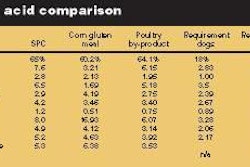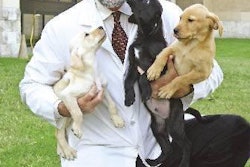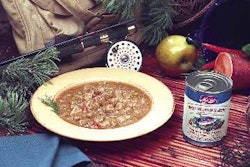Last month I attended the Backer 40th Annual Pet Industry Trade Show near Chicago with Petfood Industry publisher Steve Akins. None to our surprise, we saw many petfoods and treats touted as natural, organic or both. What really caught our eye were the number of products that looked exactly like food most humans would eat. (This could be partly because we made the mistake of covering the show without eating lunch first.)
These products take "human grade" to a whole new level. We're talking chicken drumsticks with dumplings. Stew brimming with beef and carrots. Sausage resembling the finest bratwurst. Treats that could have been created at the most heavenly human bakery.
Of course, this is not news to those of you defining and riding this trend. And it's manifest not only in products but also in petfood packaging, such as the new single-portion and resealable containers. In Europe, manufacturers are introducing sports drinks and drink packs for pets.
This trend is one of the most interesting responses to the desire of pet owners to treat their furry charges as full-fledged family members. Where does this inclination come from?
A long tradition
One likely source is the rising number of pet owners, especially couples, without human kids living in their homes. The percentage of two-adult households with dogs or cats but without children increased from 48.8% in 2003 to 55.5% in 2005, according to Packaged Facts (see p. 24).
Another possible reason could be based on a long tradition rather than a recent phenomenon: people's tendency to anthropomorphize, or attribute human qualities to animals and objects. This has been going on for centuries in religion, mythology, literature, art and, increasingly in modern times, culture.
According to a website published by Carnegie Mellon University, www.anthropomorphism.org, some people trace this to Darwin's theory of evolution. Darwin "argued that the difference between us and animals is only a matter of degree. Some biologists working with apes and chimps agree, as would people who consider their pets to be family members," reads information on the site.
The site also explains some of the psychology behind anthropomorphism: "We apply special significance to many objects we possess and to animals and people with whom we feel close. A personal relationship with something or someone involves an emotional bond and a feeling there is less difference between them and us."
This means we tend to identify with the other person or animal and take his or her perspective; we believe his or her traits and motivations are similar to our own. "Hence, we can expect that our own cherished friend, pet or product will be excused from any foibles and given credit for successes and benefits," the site says. It also cites studies showing that people perceive animals to have personality traitsfor example, a dog may be described as extroverted, cheerful and outgoing.
Pink shoes for dogs
That's why, if you look up "anthropomorphism" on www.wikipedia.com, you'll find a photo of a dog wearing a camouflage hat and coat, plus a scarf and sunglasses. Or why at a pet trade event such as the recent Backer show, you'll see products like pink tennis shoes for dogs and stuffed animals specially designed for puppies and kitties, plus all those supposedly human-edible petfoods and treats.
I've heard experts say they can see this trend evolving to the point, not too far off, when we might find ourselves eating the exact same brands we feed to our pets. Now wouldn't that open up a lucrative new business model and revenue stream?

















